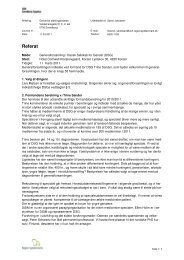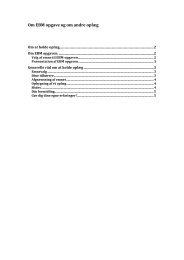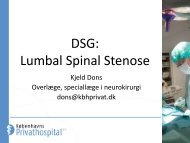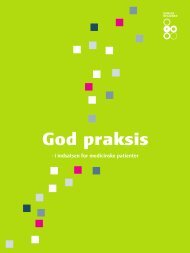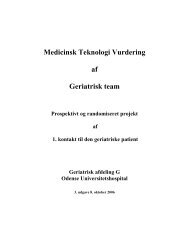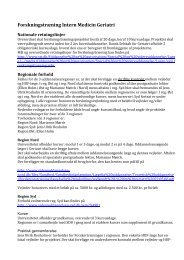Comprehensive geriatric assessment for older adults admitted to ...
Comprehensive geriatric assessment for older adults admitted to ...
Comprehensive geriatric assessment for older adults admitted to ...
Create successful ePaper yourself
Turn your PDF publications into a flip-book with our unique Google optimized e-Paper software.
Risk of bias in included studies<br />
The studies identified were heterogeneous in quality (Figure 3).<br />
All employed some method of individual patient randomisation,<br />
however reporting of key issues such as allocation concealment<br />
varied. Outcome <strong>assessment</strong> was seldom blinded. This is less significant<br />
<strong>for</strong> hard outcomes such as death or institutionalisation,<br />
but becomes more important <strong>for</strong> outcomes such as activities of<br />
daily living or cognition.<br />
Figure 3. ’Risk of bias’ graph: review authors’ judgements about each risk of bias item presented as<br />
percentages across all included studies.<br />
We extracted data from published in<strong>for</strong>mation only. We did not<br />
contact trialists <strong>for</strong> additional data. Reporting of outcomes was<br />
variable. Different reporting mechanisms were used <strong>for</strong> description<br />
of some data (<strong>for</strong> example, activities of daily living, which could be<br />
reported as a categorical or variable outcome). For this reason, we<br />
did not combine some outcomes <strong>for</strong> meta-analysis. Data quality<br />
was also variable with some trialists reporting data with standard<br />
deviations, some reporting interquartile ranges and some reporting<br />
standard errors.<br />
We noted attrition in some trials (Collard 1985; Harris 1991) <strong>for</strong><br />
functional outcomes. In some cases (Collard 1985) this exceeded<br />
25%. We felt that the possibility of attrition bias might be introduced<br />
<strong>for</strong> outcomes that could be unduly influenced by an un-<br />
<strong>Comprehensive</strong> <strong>geriatric</strong> <strong>assessment</strong> <strong>for</strong> <strong>older</strong> <strong>adults</strong> <strong>admitted</strong> <strong>to</strong> hospital (Review)<br />
Copyright © 2011 The Cochrane Collaboration. Published by John Wiley & Sons, Ltd.<br />
blinded trial design. Results from this trial have been included <strong>for</strong><br />
the outcome of dependence, however the results must be interpreted<br />
with some caution.<br />
Effects of interventions<br />
Comparison 1: <strong>Comprehensive</strong> <strong>geriatric</strong> <strong>assessment</strong><br />
(CGA) versus usual care<br />
The first primary outcome summarises data from 22 trials of<br />
10,315 participants comparing CGA with usual care (e.g. on a<br />
general medical ward). We analysed this using the main subgrouping<br />
of CGA wards and CGA teams versus usual care. Subgroup<br />
8



